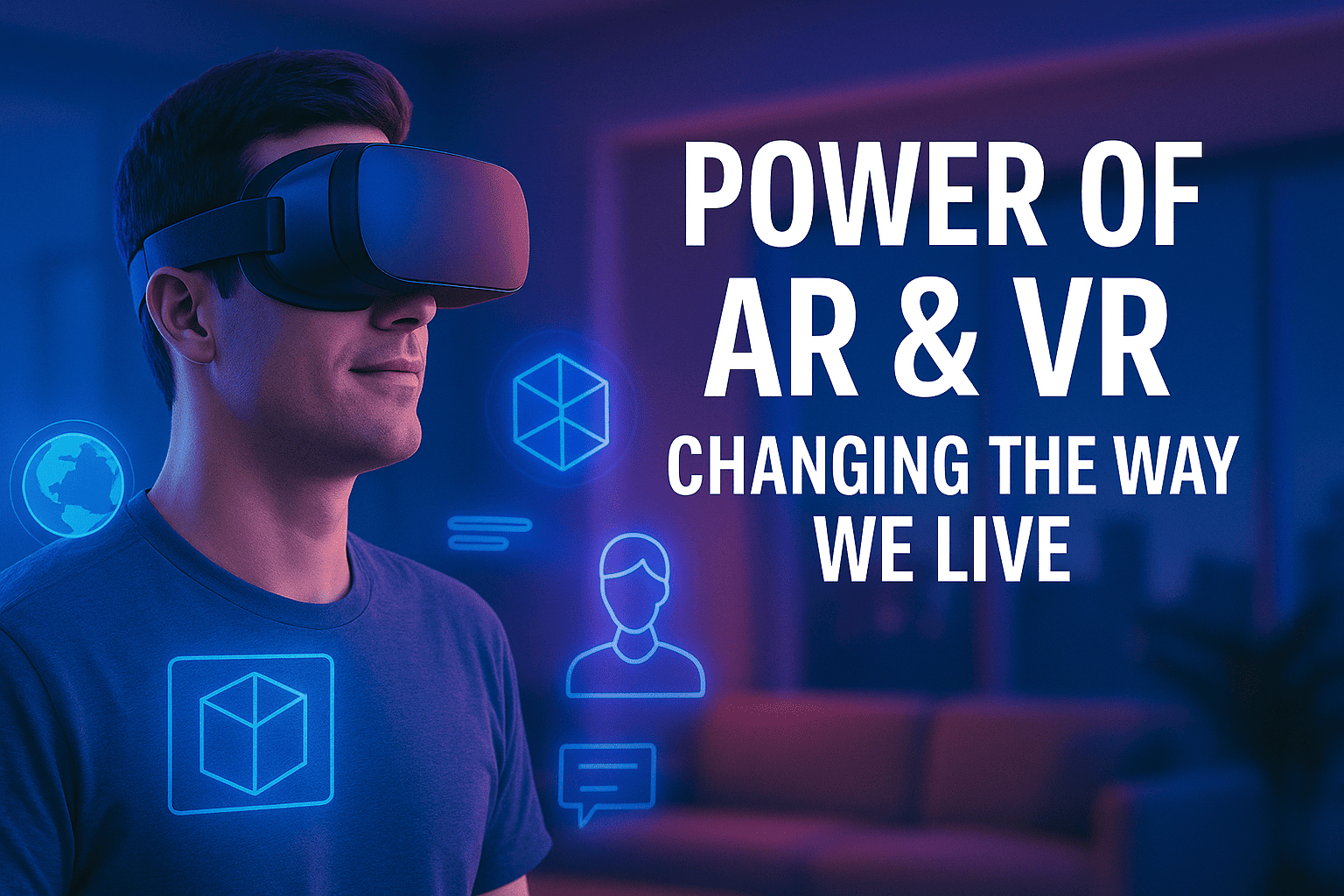Augmented and Virtual Reality are no longer just terms associated with technology. They are shifting how we live, work, learn, and even affect our feelings. These immersive technologies are bringing an entire world right in front of our faces, and in many cases, around us entirely.
So, let’s take a look at how these impactful technologies improve our everyday lives and forge a future for interaction.
What Is AR & VR?
Before we get further into it, let’s quickly get a basic understanding of each.
AR (Augmented Reality) overlays digital elements (images, sounds, or text) onto the real world. Think of the popular mobile game Pokémon GO, or furniture apps that take a picture of your living room and allow you to place an animated sofa within it.
VR (Virtual Reality) is a completely virtual experience. Putting on a VR headset will remove you from your physical reality and put you into another reality (video game, museum display, medical simulation, etc.).
Both provide an immersive, interactive experience that is opening doors we never knew existed.
Why AR & VR Matter Today
These technologies are not just fun and games; they are helping people solve real world problems. The future of augmented reality (AR) and virtual reality (VR) has arrived to change our lives.
Think about education, students can now explore the human body in 3D or take a virtual field trip to Mars. In healthcare, doctors are using AR as a surgeon’s assistant for procedures. In real estate, VR allows prospective buyers to tour a house without even leaving theirs.
Combining the virtual world with the real world has changed how we learn, feel and decide.
Where AR & VR Are Making an Impact
Let’s look at one section with bullet points:
Gaming & Entertainment: The gaming industry is being redefined. Instead of manipulating players from a distance, VR games put the player inside the story. AR also adds to the gaming experience by bringing characters into your own room.
Healthcare: Surgeons are starting to use AR for better precision when it counts. VR can be used to treat anxiety, phobias, and PTSD.
Education: AR lets kids see how planets float in their classroom. VR can let students walk inside a volcano or dive under the ocean.
Retail: Put on clothes or glasses virtually using AR rather than spending time putting them on in the store. This helps you save time and make decisions.
Architecture & Real Estate: Without building the home, you can show a client a 3D walkthrough.
The Emotional Connection
AR and VR are not simply technologies they are emotional experiences. Imagine seeing your family across the country in full 3D presence. Imagine a patient with mobility issues being able to “travel” the world again through a VR headset.
The experiences feel magical, real, and emotional. They help us feel more connected to the world, especially when we are not in it.
What’s Next?
The future of AR & VR is closer every day. With better hardware, smarter AI, and more creative developers, soon AR Glasses will be as common as cell phones. VR could be your go-to for meetings, workouts, or even holidays.
And this is just the beginning.
Final Thoughts: Are You Ready to Step In?
The power of AR and VR is not just about cool tech. It’s about changing lives. It’s about creating new ways to experience, feel, and understand the world around us.
Whether it’s learning, gaming, shopping, or healing—these immersive tools are building a smarter, more connected tomorrow.
So, are you ready to live the future?
Read Also:
Explore more tech updates here → Click here


1 thought on “Power of AR & VR: Changing the Way We Live”